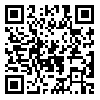Volume 15, Issue 58 (7-2006)
JGUMS 2006, 15(58): 27-32 |
Back to browse issues page
Download citation:
BibTeX | RIS | EndNote | Medlars | ProCite | Reference Manager | RefWorks
Send citation to:



BibTeX | RIS | EndNote | Medlars | ProCite | Reference Manager | RefWorks
Send citation to:
Jafari Shakib R, Ajdari S, Khamesipour, Shokrgozar M, Mortazavi H, Malakafzali B et al . Soluble CD26 and CD30 Concentration in Cutaneous Leishmaniasis. JGUMS 2006; 15 (58) :27-32
URL: http://journal.gums.ac.ir/article-1-461-en.html
URL: http://journal.gums.ac.ir/article-1-461-en.html
R Jafari Shakib *1 
 , S Ajdari
, S Ajdari 
 , Khamesipour
, Khamesipour 
 , M.A Shokrgozar
, M.A Shokrgozar 
 , H Mortazavi
, H Mortazavi 
 , B Malakafzali
, B Malakafzali 
 , B Nikbin
, B Nikbin 


 , S Ajdari
, S Ajdari 
 , Khamesipour
, Khamesipour 
 , M.A Shokrgozar
, M.A Shokrgozar 
 , H Mortazavi
, H Mortazavi 
 , B Malakafzali
, B Malakafzali 
 , B Nikbin
, B Nikbin 

Abstract: (6640 Views)
Abstract
Introduction: Cutaneous leishmaniasis (CL) is the most common form of leishmaniasis that usually heals spontaneously with unsightly scar but rarely non-healing lesion of CL develops which is refractory to all types of therapy. It is shown that Th1 and Th2 response is associated with healing and non-healing form of the diseases, respectively. On the other hand, it is reported that CD26 and CD30 are associated with Th1 and Th2 types of response, respectively. In some diseases, there is a relationship found between level of CD26 and CD30 and Th1 and Th2 responses.
Objective: The goal of this study was to determine the concentration of soluble CD26 and soluble CD30 (sCD26 and sCD30) as a possible marker for Th1/Th2 response in CL
Materials and Methods: The blood samples were taken from 36 patients with healing form of the lesion and 10 patients with non-healing form of CL who were referred to Razi hospital or Center for Research and Training in Skin Diseases and Leprosy in Tehran during 2003-2004. As a control blood samples were taken from 23 volunteers with no history of CL. In this study, the concentration of sCD26 and sCD30 were measured in plasma by ELISA method.
Results: The results showed that the plasma levels of sCD26 and sCD30 were significantly higher in non-healing form of the disease than healing form of CL or control group (p<0.05). The level of sCD30 was more prominent than sCD26. There was no significant difference in the level of sCD26 or sCD30 markers in healing form of CL compared to normal control group.
Conclusion: Overall it seems that the level of sCD30 might be a useful marker to study the immune response in CL, which needs to be studied further.
Review Paper: Research |
Subject:
Special
Received: 2014/01/14 | Accepted: 2014/01/14 | Published: 2014/01/14
Received: 2014/01/14 | Accepted: 2014/01/14 | Published: 2014/01/14
| Rights and permissions | |
 |
This work is licensed under a Creative Commons Attribution-NonCommercial 4.0 International License. |




